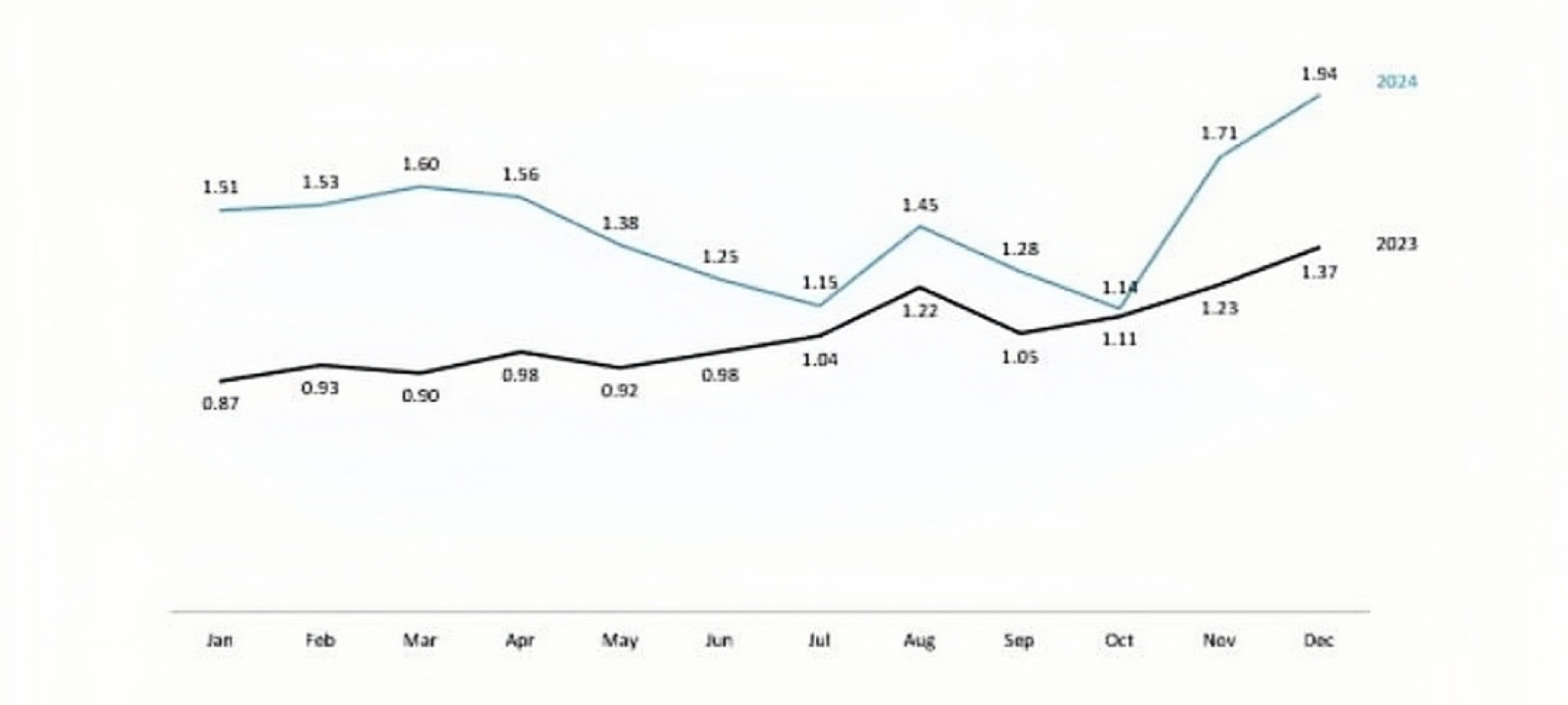Vietnam’s tourism sector has demonstrated remarkable resilience in the time since the Covid-19 pandemic, emerging as one of the brightest spots in the region. According to data from the Vietnam National Authority of Tourism (VNAT), the country welcomed over 17.6 million international visitors last year, reaching 98 per cent of the level immediately prior to the pandemic.
Notably, it welcomed over 9.2 million international tourists in the opening five months of this year, up 21.3 per cent against the same period of 2024. This figure not only signifies a near-complete recovery but also positions Vietnam’s tourism sector as the most impressive in terms of recovery within the ASEAN region.
Growing appeal
With strong growth momentum and a bright outlook, Vietnam is increasingly asserting itself as an attractive tourism market in the eyes of international businesses and organizations. The sector’s swift recovery not only signals positive prospects for domestic tourism but also presents significant opportunities for foreign companies to expand their presence and tap into Vietnam’s abundant potential.
At the end of May, China’s leading online travel services provider, the Trip.com group, signed a strategic cooperation agreement with Sun World Holding, a flagship Vietnamese brand under the Sun Group.
Through this cooperation, Trip.com will distribute tickets to Sun World’s amusement and entertainment complexes both domestically and internationally, with a particular focus on key markets such as South Korea, China, Thailand, and Singapore. The two parties will also collaborate on joint media campaigns to promote Vietnam’s leading destinations, contributing to increased international arrivals to the country.
Vietnam’s tourism cooperation is not limited to bilateral agreements; the sector has also seen growing efforts to foster regional connectivity. In late May, the Singapore Tourism Board (STB) signed an MoU with iVIVU.com, one of Vietnam’s leading online travel platforms, to boost Vietnamese tourist flows to Singapore while also leveraging the potential of Vietnam’s tourism market through joint promotional activities, digital marketing campaigns, and the sharing of market data.

Beyond signed agreements, more and more global corporations are expressing a keen interest in Vietnam’s tourism sector. During a working visit to Vietnam in March, Mr. Ted Osius, President and CEO of the US-ASEAN Business Council, emphasized that US companies are showing strong interest in developing high-end tourism infrastructure and international-standard accommodation services as well as expanding sustainable tourism, green tourism, and cultural tourism offerings.
He added that strengthening cooperation with US companies not only provides Vietnam with access to financial resources and advanced technologies but also contributes to upgrading the country’s tourism infrastructure, including hotels, resorts, and premium service facilities, thereby enhancing Vietnam’s position in the global high-end tourism market.
Market of potential
The Vietnam Tourism Association has set an ambitious target for 2025 of attracting between 25 and 28 million international visitors and catering to around 130 million domestic tourists.
If achieved, these figures are expected to help tourism contribute around 8 to 9 per cent to national GDP, affirming the industry’s growing role as a key driver of economic growth and sustainable development in Vietnam.
Alongside rising visitor numbers, Vietnam’s tourism market is also witnessing strong revenue growth. According to Statista, tourism and travel revenue in the country is expected to reach $3.45 billion this year and maintain a healthy compound annual growth rate (CAGR) of 5.54 per cent from 2025 to 2029, reaching approximately $4.29 billion by 2029.
Vietnam’s tourism industry is not only growing in volume but also evolving in quality. Amid a rapidly expanding wave of digital transformation, modern technologies such as AI, big data, and digital payments are being increasingly integrated into tourism services. These strategic advancements are helping develop smart tourism products, personalize customer experiences, and enhance Vietnam’s competitiveness on the global tourism map.
This digital transformation process in Vietnam’s tourism sector is also creating compelling investment opportunities for international partners. “US businesses hope to contribute to this transformation through collaborative projects in cashless payments, smart tourism technologies, AI, and the development of a creative industry ecosystem,” Mr. Osius noted.
Market exploration strategies
Strong performance and vast potential are encouraging international tourism agencies and enterprises to expand their partnerships in Vietnam. A growing number of global companies and international organizations are also actively developing broader strategies to strengthen and scale up their presence in Vietnam’s tourism market.
Many partners increasingly view Vietnam not only as an attractive destination for visitors but also as a strategic hub for long-term growth, innovation, and sustainable investment in the region. With its dynamic economic development, rich cultural heritage, and accelerating digital transformation, Vietnam is emerging as a focal point for forward-looking tourism initiatives and cross-border collaborations.
A representative from the Korea Tourism Organization (KTO) in Vietnam noted that, in 2024, there were 510,000 Vietnamese tourists traveling to South Korea, while 4.6 million South Korean tourists visited Vietnam. The total number of travelers in both directions therefore exceeded 5 million, which is seen as a testament to the deep and effective cooperation between the two countries in tourism.
“In 2025, we will ramp up the promotion of seasonal festivals and tourism products among Vietnamese travelers,” the representative said. “At the same time, we aim to develop more experiential travel, family tourism, and sports tourism products, to meet the increasingly diverse demands of international tourists, especially from Vietnam.”
For many international businesses, Vietnam is not only a destination to bring tourists to but is also increasingly viewed as a strategic launch pad for regional expansion. In this regard, Mr. Boon Sian Chai, Managing Director and Vice President of International Markets at the Trip.com group, said it is working to understand how to operate more effectively in Vietnam, recognizing that the market requires a distinct approach, from language and payment methods to localized strategies.
He also noted that the group is applying lessons learned in Thailand, Malaysia, and Singapore and then adapting them to Vietnam. However, he added that Vietnam has unique structures, demographics, and payment ecosystems. For instance, the proportion of credit card holders in the country is much lower than in neighboring markets.
Therefore, the group is actively learning and optimizing. “And rest assured, we are continuing to invest in this region,” he said. “Our goal is not only to bring more international customers to Vietnam but also to serve and grow our Vietnamese customer base, driving business both into and out of the country.”









 Google translate
Google translate